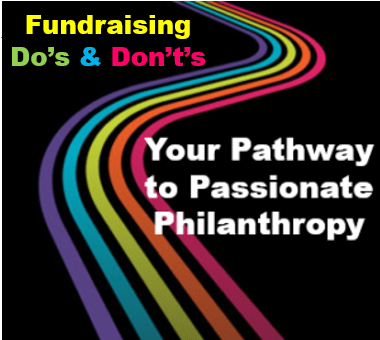Fundraising Don’ts vs. Do’s: Giving Tuesday Email +Donation Landing Page
 It’s not too late to use these tips to help with your year-end fundraising.
It’s not too late to use these tips to help with your year-end fundraising.
This new “Do’s vs. Don’ts” feature is popular, so I thought I’d share another one that seems like a good ‘teaching opportunity.’ It’s a twofer, as I’ll discuss both the appeal and the donation landing page to which it takes folks — should they be inspired to click through.
Please note: Sometimes I can’t omit the name of the charity in the examples I use. Please know I’m coming from a place of love, and don’t mean to shame anyone. As with almost anything you can think of, there’s good AND bad in the examples I share. We learn both from mistakes and stellar efforts. Our own, and others. Kudos to all who put things out there and make an effort. The only way you learn is by trying. Believe me, I’ve sent out some real clunkers in my time as a development director! If I ever use you as an example, and you disagree or want to clarify, feel free to contact me directly.
Okay. Let’s move on.
We’re going to evaluate every element methodically.
I’ll ask you some questions.
- Would you open that email?
- If yes, why?
- If no, why?
- What looks good about it?
- What looks not so good?
- Would it inspire you to give?
- If so, why?
- If not, why not?
First, I’d like you to think about your answers and jot them down.
Second, I’ll tell you what I think.
Let’s begin!

 There’s a lot about fundraising folks take for granted. And not in a good way. Because… much of it is untrue!
There’s a lot about fundraising folks take for granted. And not in a good way. Because… much of it is untrue!
 For fundraisers, December is a marathon of appeals, posts, thank-yous, events, and all the other tasks associated with the busiest month of the fundraising year. For donors, it’s equally chaotic. Family, friends, work, holiday planning, and parties crowd their schedules. Advertisements clog up their email inboxes and news feeds. They receive multiple appeals from multiple nonprofits looking to capitalize on holiday generosity.
For fundraisers, December is a marathon of appeals, posts, thank-yous, events, and all the other tasks associated with the busiest month of the fundraising year. For donors, it’s equally chaotic. Family, friends, work, holiday planning, and parties crowd their schedules. Advertisements clog up their email inboxes and news feeds. They receive multiple appeals from multiple nonprofits looking to capitalize on holiday generosity.
 Who doesn’t love a holiday?
Who doesn’t love a holiday?
 When planning a charity auction, there are several moving parts to keep track of: your venue, item procurement, guest registration, guest management, and more. Whether you’re
When planning a charity auction, there are several moving parts to keep track of: your venue, item procurement, guest registration, guest management, and more. Whether you’re 

 Do you have monthly donors, or a monthly donor program?
Do you have monthly donors, or a monthly donor program?
